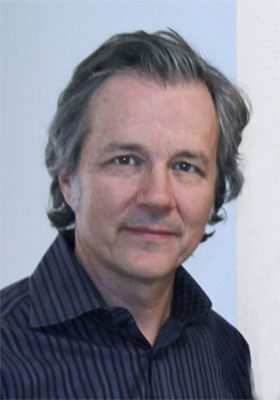David Johndrow is a fine art photographer living in Austin, Texas. After studying photography the University of Texas, he began shooting commercial work as well as pursuing his more personal fine art photography.
David’s continuing series, Terrestrials, combines his passion for gardening and photography and features macro nature photographs of animals and plants that inhabit his Hill Country, Texas garden. To realize his vision, he prints with silver gelatin, platinum/palladium, gum-bichromate and gumoil.
His photographs are part of the Wittliff Collection of Southwestern and Mexican Photography, as well as in many private collections.
All about David Johndrow:AAP: When did you realize you wanted to be a photographer?I took a darkroom class in art school and fell in love with the process. The first roll of film I shot I processed and printed myself.
AAP: Where did you study photography?I learned photography at The University of Texas, but I built my own darkroom and started working on my own. I really honed my printing skills working as a printer in a photo lab. Just the shear volume of work I printed during that time made me a better printer.
AAP: Do you have a mentor or role model?I can’t say I had any mentors except for photographers like Irving Penn who I loved and was inspired by.
AAP: How long have you been a photographer?I’ve been a photographer for 30 years.
AAP: Do you remember your first shot? What was it?My first shot was of my friends who were in a band. I had other friends who were actors and comedians, so I started taking lots of portraits for peoples publicity shots.
AAP: What or who inspires you?I am inspired creatively by many different kinds of artists, but my biggest inspiration is the natural world. Rarely do I go in search of photographs; rather things just appear to me when I spend enough time outdoors. Gardening is my biggest obsession next to art.
AAP: How could you describe your style?I have lots of styles but my most well know work is done in macro. I guess the one common thing in all my work is a simple graphic composition.
AAP: Do you have a favorite photograph or series? I love Matt Mahurin, especially his portraits of
Tom Waits. AAP: What kind of gear do you use?I shoot with a Hasselblad on 120 film.
AAP: Do you spend a lot of time editing your images?Although I shoot on film, I edit my images on the computer. It helps me group images in a series or arrange them for exhibition.
AAP: Favorite(s) photographer(s)?My favorite photographer is Irving Penn.
AAP: What advice would you give a young photographer?I would tell young photographers to shoot a lot of images, do a lot of experiments, and try to learn some different printing processes.
AAP: What mistake should a young photographer avoid?Don’t try and shoot photos of things you think others would like but shoot subjects you are most interested in. Every subject has been done before, so try and put your own spin on it.
AAP: What are your projects?The project I’m working on is close-ups of natural textures.
AAP: Your best memory as a photographer?My best memory is of shooting the pyramid at Chichen Itsa. It was at the solstice and I wanted a photo of the serpent shadow on the steps, but it was a cloudy, rainy day. Suddenly, right before closing, the sun burst out and I got some great shots.
AAP: Your worst souvenir as a photographer?Don’t know
AAP: The compliment that touched you most?“Every time I look at your photograph I see something different”.
AAP: If you were someone else who would it be?No one else.
AAP: Your favorite photo book?Irving Penn: Passages
